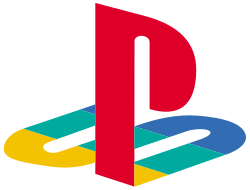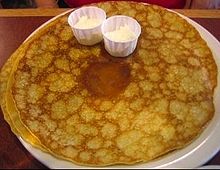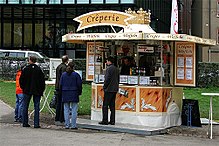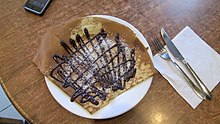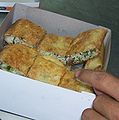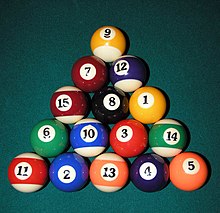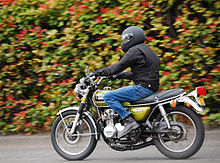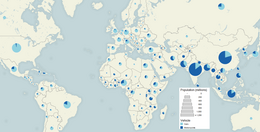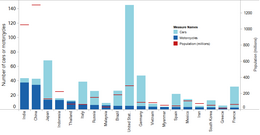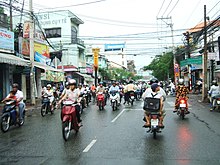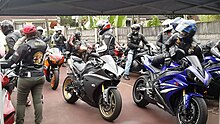PlayStation (Japanese: プレイステーション Hepburn: Pureisutēshon?, officially abbreviated PS) is a gaming brand that consists of four home video game consoles, as well as a media center, an online service, a line of controllers, two handhelds and a phone, as well as multiple magazines. It is created and owned by Sony Interactive Entertainment since December 3, 1994, with the launch of the original PlayStation console in Japan.[1]
The original console in the series was the first video game console
to ship 100 million units, 9 years and 6 months after its initial
launch.[2] Its successor, the PlayStation 2, was released in 2000. The PlayStation 2 is the best-selling home console to date, having reached over 155 million units sold as of December 28, 2012.[3] Sony's next console, the PlayStation 3, was released in 2006 and has sold over 80 million consoles worldwide as of November 2013.[4] Sony's latest console, the PlayStation 4,
was released in 2013, selling 1 million consoles in its first 24 hours
on sale, becoming the fastest selling console in history.[5]
The first handheld game console in the PlayStation series (called the PlayStation Portable or PSP), sold a total of 80 million units worldwide by November 2013.[6] Its successor, the PlayStation Vita,
which launched in Japan on December 17, 2011 and in most other major
territories in February 2012, had sold over 4 million units by January
2013.[7] PlayStation TV is a microconsole and a non-portable variant of the PlayStation Vita handheld game console.[8] Other hardware released as part of the PlayStation series includes the PSX, a digital video recorder
which was integrated with the PlayStation and PlayStation 2, though it
was short lived due to its high price and was never released outside
Japan, as well as a Sony Bravia television set which has an integrated PlayStation 2. The main series of controllers utilized by the PlayStation series is the DualShock, which is a line of vibration-feedback gamepad having sold 28 million controllers as of June 28, 2008.[9]
The PlayStation Network is an online service with over 110 million users worldwide (as of July 2013).[10] It comprises an online virtual market, the PlayStation Store, which allows the purchase and download of games and various forms of multimedia, a subscription-based online service known as PlayStation Plus and a social gaming networking service called PlayStation Home, which had over 41 million users worldwide at the time of its closure in March 2015.[11] PlayStation Mobile (formerly PlayStation Suite) is a software framework that provides PlayStation content on mobile devices. Version 1.xx supports both PlayStation Vita, PlayStation TV and certain devices that run the Android operating system, whereas version 2.00 released in 2014 would only target PlayStation Vita and (optionally) PlayStation TV.[12] Content set to be released under the framework consist of only original PlayStation games currently.[13]
7th generation PlayStation products also use the XrossMediaBar, which is an award-winning graphical user interface.[14] A new touch screen-based user interface called LiveArea was launched for the PlayStation Vita, which integrates social networking elements into the interface. Additionally, PlayStation 2 and original PlayStation 3 consoles also featured support for Linux-based operating systems,
though this has since been discontinued. The series has also been known
for its numerous marketing campaigns, the latest of which being the
"Greatness Awaits" commercials in the United States.
The series also has a strong line-up of first-party titles due to Sony Interactive Entertainment Worldwide Studios, a group of fifteen first-party developers owned by Sony Interactive Entertainment
which are dedicated to developing first-party games for the series. In
addition, the series features various budget re-releases of titles by
Sony with different names for each region; these include the Greatest Hits, Platinum, Essentials, Favorites and The Best ranges of titles.
HISTORY
Original PS logo
PlayStation was the brainchild of Ken Kutaragi,
a Sony executive who had just finished managing one of the company's
hardware engineering divisions at that time and would later be dubbed as
"The Father of the PlayStation".[15][16]
The console's origins date back to 1988 where it was originally a joint project between Nintendo and Sony to create a CD-ROM for the Super Famicom.[17] Although Nintendo denied the existence of the Sony deal as late as March 1991,[18] Sony revealed a Super Famicom with a built-in CD-ROM drive, that incorporated Green Book technology or CD-i, called "Play Station" (also known as SNES-CD) at the Consumer Electronics Show
in June 1991. However, a day after the announcement at CES, Nintendo
announced that it would be breaking its partnership with Sony, opting to
go with Philips instead but using the same technology.[19]
The deal was broken by Nintendo after they were unable to come to an
agreement on how revenue would be split between the two companies.[19] The breaking of the partnership infuriated Sony President Norio Ohga, who responded by appointing Kutaragi with the responsibility of developing the PlayStation project to rival Nintendo.[19]
At that time, negotiations were still on-going between Nintendo and
Sony, with Nintendo offering Sony a "non-gaming role" regarding their
new partnership with Philips. This proposal was swiftly rejected by
Kutaragi who was facing increasing criticism over his work with regard
to entering the video game industry from within Sony. Negotiations
officially ended in May 1992 and in order to decide the fate of the
PlayStation project, a meeting was held in June 1992, consisting of Sony
President Ohga, PlayStation Head Kutaragi and several senior members of
Sony's board. At the meeting, Kutaragi unveiled a proprietary
CD-ROM-based system he had been working on which involved playing video
games with 3D graphics to the board. Eventually, Sony President Ohga
decided to retain the project after being reminded by Kutaragi of the
humiliation he suffered from Nintendo.
Nevertheless, due to strong opposition from a majority present at the
meeting as well as widespread internal opposition to the project by the
older generation of Sony executives, Kutaragi and his team had to be
shifted from Sony's headquarters to Sony Music,
a completely separate financial entity owned by Sony, so as to retain
the project and maintain relationships with Philips for the MMCD
development project (which helped lead to the creation of the DVD).[19]
According to SCE's producer Ryoji Akagawa and chairman Shigeo Maruyama, there was uncertainty over whether the console should primarily focus on 2D sprite graphics or 3D polygon graphics. It was only after witnessing the success of Sega's Virtua Fighter
in Japanese arcades that "the direction of the PlayStation became
instantly clear" and 3D polygon graphics became the console's primary
focus.[20]
Formation of Sony Computer Entertainment
At Sony Music Entertainment, Kutaragi worked closely with Shigeo Maruyama, the CEO of Sony Music, and with Akira Sato to form Sony Computer Entertainment Inc. (SCEI) on November 16, 1993.[21]
A building block of SCEI was its initial partnership with Sony Music
which helped SCEI attract creative talent to the company as well as
assist SCEI in manufacturing, marketing and producing discs, something
that Sony Music had been doing with Music Discs. The final two key
members of SCEI were Terry Tokunaka, the President of SCEI from Sony's
headquarters, and Olaf Olafsson. Olafsson was CEO and president of New York-based Sony Interactive Entertainment[22] which was the mother company for the 1994-founded Sony Computer Entertainment of America (SCEA).
The PlayStation project, SCEI's first official project, was finally
given the green light by Sony executives in 1993 after a few years of
development. Also in 1993, Phil Harrison, who would later become President of Sony Computer Entertainment Worldwide Studios, was recruited into SCEI to attract developers and publishers to produce games for their new PlayStation platform.[19]
After a demonstration of Sony's distribution plan as well as tech
demos of its new console to game publishers and developers in a hotel in
Tokyo in 1994, numerous developers began to approach PlayStation. Two of whom later became major partners were Electronic Arts in the West and Namco
in Japan. One of the factors which attracted developers to the platform
was the use of a 3D-capable, CD-ROM-based console which was much
cheaper and easier to manufacture for in comparison to Nintendo's rival
console, which used cartridge systems. The project eventually hit
Japanese stores in December 1994 and gained massive sales due to its
lower price point than its competitor, the Sega Saturn. Popularity of the console spread after its release worldwide in North America and Europe.

